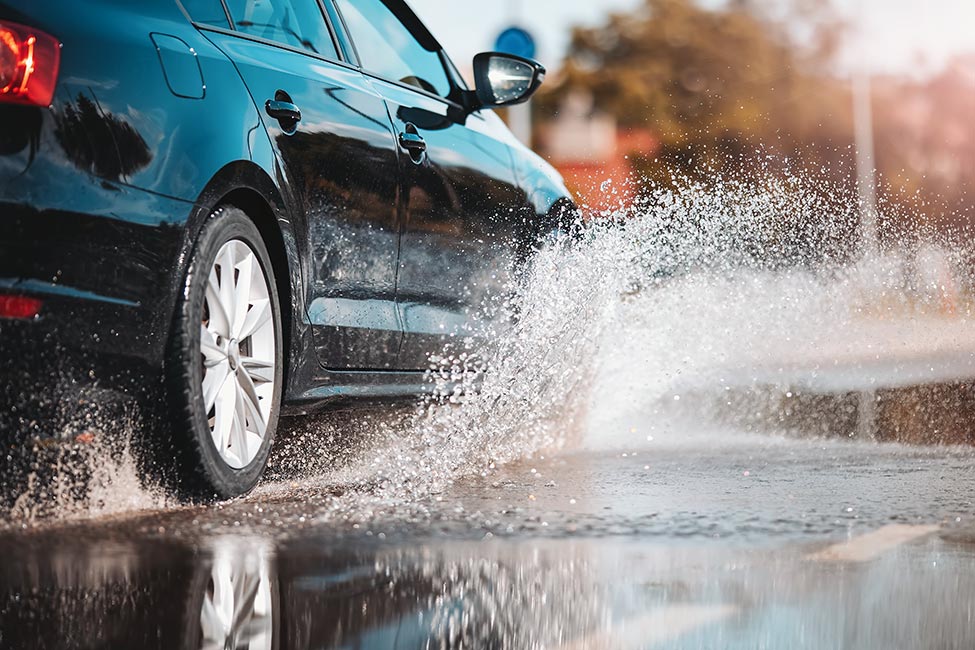Aquaplaning : how to avoid it
Aquaplaning : how to avoid it

©LeManna/iStock
When the weather is bad, there are many hazards for drivers on the road. In wet weather, the risk of aquaplaning is particularly high. What is aquaplaning ? How can it be avoided, and what should you do when it happens ? ViaMichelin gives you the answers.<br />
What is aquaplaning ?
When a car aquaplanes, it slides across the water on the road in an uncontrolled way. Sometimes called hydroplaning, it refers to the loss of a vehicle’s grip when the tyres come into contact with a film of water that has accumulated on the surface of the road.
Most of the time, aquaplaning occurs when it’s raining or while the road is still wet after heavy rainfall. The tyres are no longer capable of properly draining the water and end up losing contact with the road. This causes the vehicle to lose control and start sliding : you lose control of the steering, and you can neither brake nor accelerate. Various factors can lead to aquaplaning, such as :
- excessive speed,
- worn tyres,
- poor road conditions that retain more water,
- the weight of the vehicle (the lighter it is, the greater the risk of aquaplaning).
How can you avoid aquaplaning ?
In order to reduce the risk of aquaplaning and drive more safely when it’s raining, consider implementing the following recommendations :
- Switch off cruise control in case of heavy rain.
- Drive at an appropriate speed : if you are driving on roads with lots of puddles or if it’s raining, be sure to slow down. The higher your speed, the more water your tyres will have to carry away.
- Check your tyre pressure : do this at least once a month. Under-inflated or over-inflated tyres greatly increase the risk of aquaplaning.
- Check the wear of your tyres regularly : smooth tyres with shallow treads increase the likelihood of aquaplaning.
Top tip : experts estimate that, at a speed of 50 mph, new tyres are able to evacuate about 30 litres of water per second. Tyre performance diminishes with time and wear.
What should you do in case of aquaplaning ?
If your vehicle starts aquaplaning, don’t panic ! Carefully follow our recommendations to make the best of this situation :
- Be flexible in your driving : avoid braking too hard, as this will increase the risk of skidding.
- Reduce your speed gradually : gently take your foot off the accelerator. Downshift to slow down with the engine brake. In contrast to a sudden braking attempt, this helps the tyres to grip the road.
- Stay in the right direction : in order to stay on course, do not suddenly turn the steering wheel. Also, keep your eyes on the road by focusing on where you need to go. This way, you reduce the risk of hitting other drivers or obstacles on the road.
The right thing to do : if vehicles are following you, warn them of the danger by using your warning lights.
Aquaplaning is one of the many dangers that motorists can face when driving on wet roads. However, a few simple habits, such as careful driving and regular tyre checks, can help reduce the risk of aquaplaning.
Feel like getting away from it all?
See our suggestions for novel trips and must-see places to visit near your home or holiday destination.